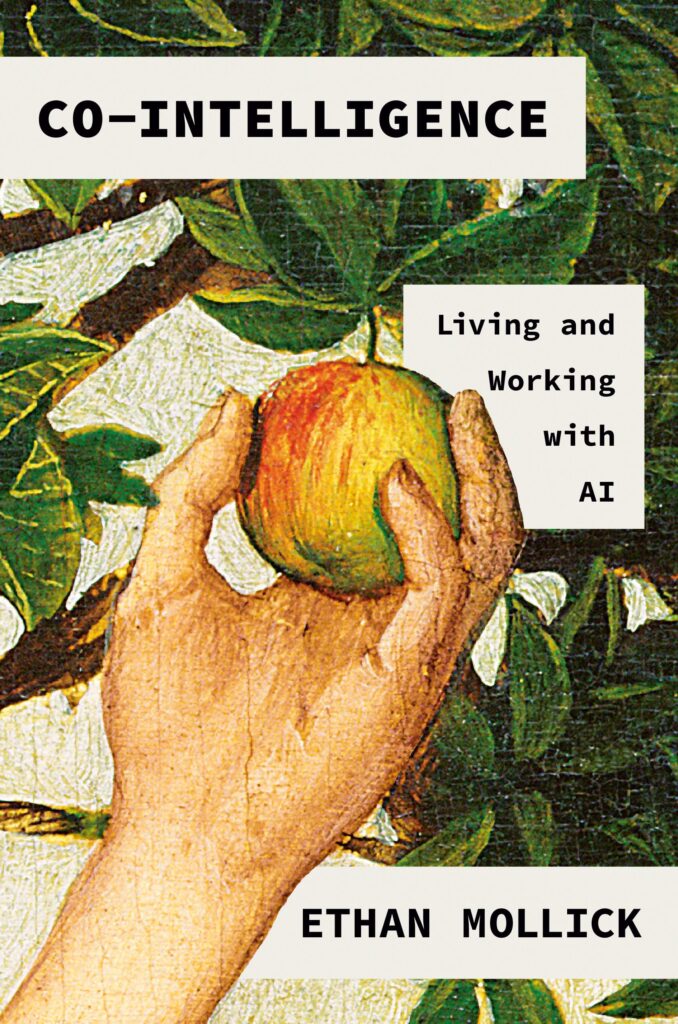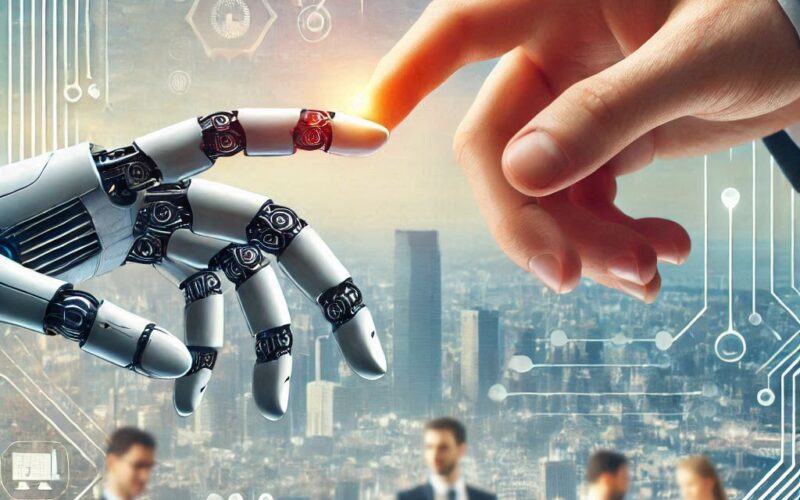“Always invite AI to the table.” That’s the first rule for living and working with Artificial Intelligence (AI) according to Wharton Business School professor, Ethan Mollick. He argues that workers who figure out how to make AI useful for their jobs will be the most successful. To achieve this means constantly working with AI to understand its nuances, limitations and abilities.
Mollick is an AI optimist. He sees the tremendous potential and upside in AI technology and he believes we should make the most of it. He classifies AI as a once-in-a-generation technology akin to the internet, or steam power. It touches every industry and every aspect of life.
Early studies have shown that AI can lead to a 20 to 80 percent improvement in productivity in diverse areas from marketing to coding. And it’s not just about work. It will change how we teach, entertain ourselves, interact with other people and even ourselves. As such, Mollick see’s AI as a ‘co-intelligence’, which is also the title of his recent book.

In his book he starts by explaining what AI is. He focuses on the new generation of AI based on Large Language Models (LLMs) using new Transformer architecture. A model like ChatGPT is pre-trained on a vast amount of data and acts like an elaborate and sophisticated autocomplete function by recognizing patterns, structures and contexts. Of course AI can also learn biases, errors and falsehoods from it training data. After pre-training, the models undergo ‘fine-tuning’ by bringing humans into the process. After release, models continue to learn through feedback from real users. Image generators learn the same way but with image data rather than text.
There is no doubt AI will affect our jobs. Research has found that only 4% of job categories are unaffected by AI. And it turns out that AI overlaps most with the most highly compensated, highly creative and highly educated work. That doesn’t mean these jobs will be replaced by AI because most jobs are a bundle of tasks that fit into larger systems. In the short term at least, it will be the tasks that change.
Within any given profession, studies have shown that those people that work with AI perform significantly better than those who don’t. But these studies revealed something quite worrying. Most participants defaulted to rely on the AI without checking, thus inadvertently accelerating a path to redundancy. To overcome this flaw we paradoxically need to follow Rule No. 1: “Always invite AI to the Table” so that we can learn what Mollick calls the “Jagged Frontier”, the boundary between what humans do best and what AI does best.
This then leads to Rule No. 2: “Be the Human in the Loop”. To keep us engaged with the AI process and prevent overreliance and complacency, we need to provide oversight by offering our unique perspective, critical thinking skills and ethical considerations.
Knowledge work is well known for the very large differences in ability between workers. Countless studies have shown that the people who get the biggest boost from AI are those with the lowest initial ability, but even the highest performers gain from AI. This great levelling could have profound effects on the future of the labor market and the relationship between co-workers.
But we have time to adapt. Humans are built into the fabric of every aspect of our organizations. This is not easily changed. So in the short term we might expect to see little change in employment patterns. Nevertheless we need to remain conscious of Amara’s Law which is the tendency to overestimate the effect of a technology in the short run and underestimate the effect in the long run.
Rule No. 3 is all about maximising AI’s potential: “Treat AI as a Person”. To make the most of AI you must define a clear and specific AI persona. Telling the system “who” it is can get beyond bland generic answers. For example you may wish it to act as a “management consultant”, or a “teacher explaining to ten-year-olds”, or a “comedian”. Doing so and then further collaborating on the output can dramatically improve your results.
Because LLMs are essentially very sophisticated connection tools, they become surprisingly useful for generating ideas. Mollick quotes several studies where the AI outperformed humans in idea generation. This is understandable when one considers the vast number of patterns and connections used to train the AI. Mollick suggests that rather than be fearful of such capability we should utilise it to enhance our own thinking. Many of the ideas generated by AI are plain terrible, but an AI is not embarrassed to offer them. This is a great strength that we can build on because within that mass of ideas are likely to be a couple of gems, or at least ideas that might spark some brilliance from you the human in the loop.
Creative writers and artists have expressed concern over the potential of being usurped by AI. They are concerned that AI is being trained on their copyrighted materials. The copyright and ownership issue needs to be sorted, but Creatives still have advantages over others in that they generally understand the history and language of the particular art form. As a result they should be far better at prompting and guiding an AI to produce something that fits their concepts and ideas.
Mollick’s final rule is “Assume this is the worst AI you will ever use”. Simply put, you can view any current limitations of AI as transient, so be hungry to explore future enhancements. The way to survive and get ahead is to embrace AI not fear it.
The writer is a co-author of Court of the Grandchildren, a novel set in 2050s America.
Main image: AI-generated
For posts on similar themes, consider:
The Myth of Artificial Intelligence

One Reply to “Survive and Thrive with AI”
Comments are closed.